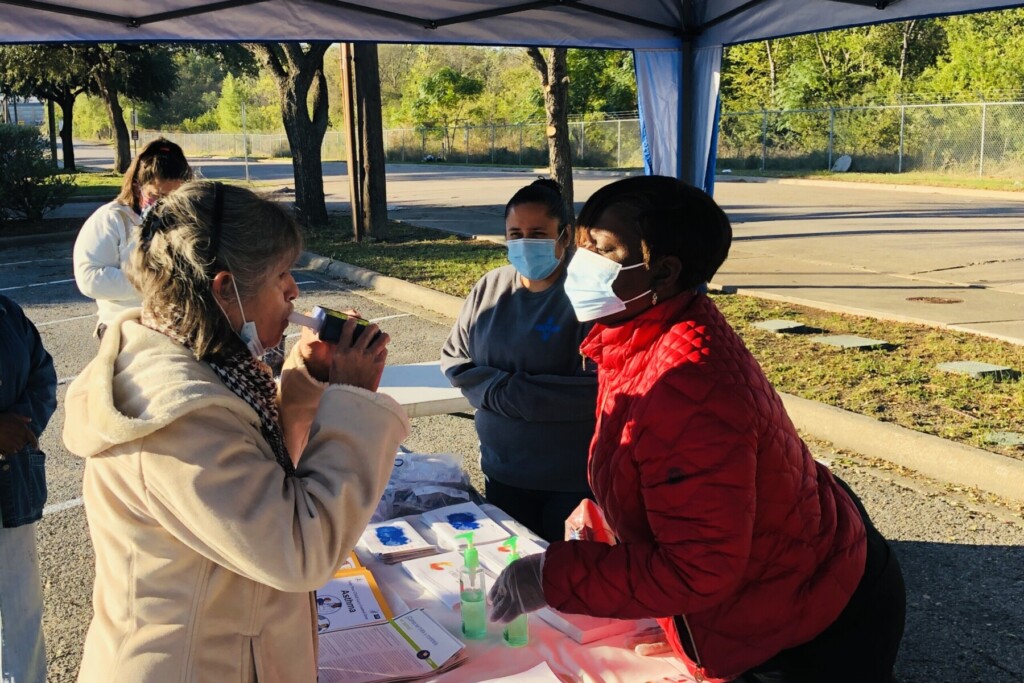A new dashboard designed to help public health experts better tailor their approach to pediatric asthma has the added potential of being a tool for communities to advocate for themselves, Parkland Center for Clinical Innovation CEO Steve Miff says.
That dashboard, called the Pediatric Asthma Surveillance System, or PASS, already highlights inequalities, as we reported Tuesday. Children in southeastern Dallas County are 12 times more vulnerable to asthma than children just 20 minutes away. The condition accounts for more than 8,000 emergency room trips and hospitalizations each year.
PASS is a shared effort between PCCI and Dallas County Health and Human Services. It was created in response to the county’s annual community health needs assessment, which showed a need to plan for how pediatric asthma is treated and ways to mitigate the risk factors associated with it.
Mapping out all that data, Miff says, helps public health experts on a granular level by allowing them to approach specific areas with the highest risk concentration to make sure those communities know what asthma looks like and where to get treatment.
The goal “is to be able to proactively reach out and engage and manage asthma with those who were at highest risk,” he says.
That intervention is one-to-one, helping families manage pediatric asthma with direct communication with the child’s caregivers via text, as well as alerts that go to a child’s doctor so they can be more proactive in managing their asthma patient. Over time, Miff says, the data gleaned from those efforts will help inform how doctors and public health officials tackle pediatric asthma, which is also one of the leading reasons for absenteeism.
The dashboard factors in a variety of things that are known to impact asthma outcomes—including demographics, presence of chronic obstructive pulmonary disease in adults, the frequency of emergency room visits, the time of year, access to health services, and how often asthma medications are prescribed and used.
It also factors in one component of air quality—the amount of 2.5 micron particulate matter in the air. It’s worth noting that there are more robust measures of air quality than the Open Weather API used in PASS, which would help explain why some areas of Dallas County have a higher vulnerability for pediatric asthma than others.
The Environmental Protection Agency’s environmental justice screening map, for instance, displays a more comprehensive index that takes into account additional airborne pollutants. SharedAirDFW.com displays the air pollution burden in communities by mapping the locations of major polluters. And outdoor air quality is not the only factor—indoor air quality can be affected by things like pests, mildew, and dust.
Comparing the PASS dashboard to the EPA and SharedAir maps can give a better idea of why, for instance, the zip code in southern Dallas near Hutchins has a high vulnerability level for pediatric asthma, while one of the primary zip codes for Preston Hollow has a low level of pediatric asthma vulnerability. Both show a high air quality vulnerability level, but each have different outcomes.
Miff says that air quality is also just one of the risk factors involved. “(PASS) was developed to be able to take a very localized approach to understand not only where the density of those children with asthma are, but also to understand what is contributing to that particular community or neighborhood being at high risk,” he says.
Those risks include socio-economic factors, too. “There are challenges that those families may face that compete with their ability to care for their children’s asthma and the resources to be able to get the right medications,” he said.
The immediate goal is to make sure children with asthma have better outcomes and treatment. But Miff says there are additional benefits to making that data easily accessible. The information families can now access will “empower them to, when appropriate and via the right vehicle, be able to influence” changes that can address the issues that create favorable conditions for childhood asthma.
“That’s why we thought it would be really important to make this available to the public as well, so individuals can understand and look at their local geography and neighborhood—not only where they live, but also where their kids go to school, where they spend their time,” he says. If families understand some of the risk factors, “they themselves can play a bigger role in how they manage their asthma with their kids.”
Miff says that the additional value the dashboard will bring is data that will allow neighborhoods to advocate for themselves in a variety of ways, from public school policies to zoning and urban development.
Author






